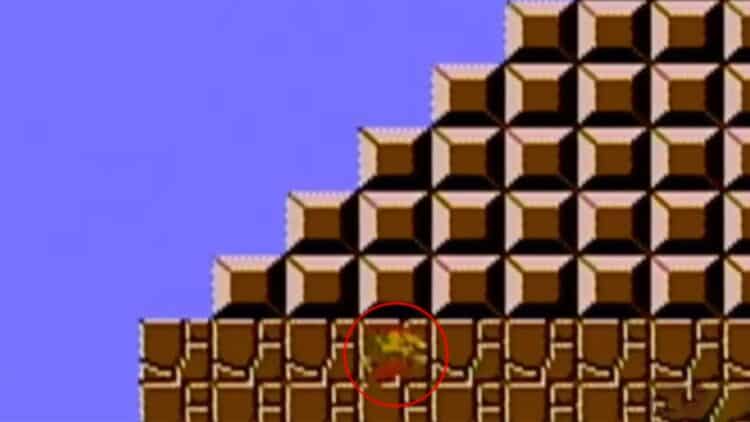On September 13 of 1985, one of the most memorable and influential video games in history premiered in Japan: Super Mario Bros. And now, 40 years after its release, a surprising and significant discovery has been made regarding an alternate ending for one of the many worlds present in the game.
An unplanned world in Super Mario Bros
Even the most loyal player of Super Mario Bros could play and replay the game several times without discovering an interesting detail at the end of world 1-2. An alternative way to finish this stage is through the famous Minus World, also called Minus -1 and recognized by the game as World 36.
This alternative way of finishing the game is a glitch, in other words, a flaw in the game’s programming that somehow allows for an unplanned action, which of course ends up becoming a goal for the more dedicated players. To access it, players need to perform a specific sequence of moves, which, when done correctly, leads to the -1 world.
Although it is a direct result of a programming error, the world of Minus 1 has become for many an experience to be achieved within the game, to the point that step-by-step guides have been created to access it. But after all, how do we enter this curious world?
Trapped in a loop: Uncovering world-1
To access the Minus World, the player needs to be near the end of level 1-2 and perform a specific sequence of maneuvers: break two blocks above the exit pipe and try to pass through the wall inverted, with a careful jump. This technique leads Mario to a teleportation area, but there are obstacles along the way, such as the Piranha Plants that can appear as they usually do: unexpectedly. After that, the player enters world -1, a water level, known since the 80s as one of the Super Mario Bros worlds.
Entering the Minus -1 is possible, but leaving it is not. In the western version of the game (NES), upon completing the level, Mario returns to the beginning of it, trapped in an infinite loop. The only way to exit is to restart the game or lose all lives. In the original Japanese version for Famicom, World -1 is beatable, and this version even grants access to other glitched levels, such as -2, -3, and -4, each with its own unexpected behaviors — no presence of bosses in the end, while others are just black screens.
These secret worlds behave in ways similar to other unusual glitches found throughout the game, such as when players trigger extra levels by incorrectly using the flagpole mechanic in certain stages. In Super Mario Bros: The Lost Levels, for example, there’s a hidden World 9 that becomes accessible after finishing the game without using any shortcuts. These elements show how even small technical glitches can turn into fun experiences within the game.
When glitches become part of the game’s experiences
Glitches are relatively common in old games and are indications that demonstrate their evolution over the last few decades. The accidental possibility of entering Minus -1 and other Minus worlds, contrary to what one might expect, is not seen as a source of frustration or disappointment with the game. On the contrary, many view it as a new opportunity to experience phases of the game.
The most impressive thing about the discovery of Minus 1 is that today, 40 years after the game’s premiere, it continues to be a point of discussion among gamers. It is further proof of the level of relevance that the Super Mario universe has and will probably continue to have over the next years.


